
-
Find the right food for your petTake this quiz to see which food may be the best for your furry friend.Find the right food for your petTake this quiz to see which food may be the best for your furry friend.Featured products
 Adult Wet Dog Food with Beef
Adult Wet Dog Food with BeefHill's Science Plan Adult Multipack Wet Dog Food with Chicken, Beef & Turkey are complete premium pet foods for adult dogs from 1 year. Your dog will love these deliciously smooth and savoury minced loaves, formulated for balanced nutrition and overall health.
Shop Now Puppy Food
Puppy FoodHill's Science Plan Puppy Multipack Wet Dog Food with Chicken & Beef are complete premium pet foods for growing puppies from weaning until 1 year old and for pregnant and nursing dogs. Your puppy will love these deliciously smooth and savoury minced loaves, formulated for balanced nutrition and overall health.
Shop Now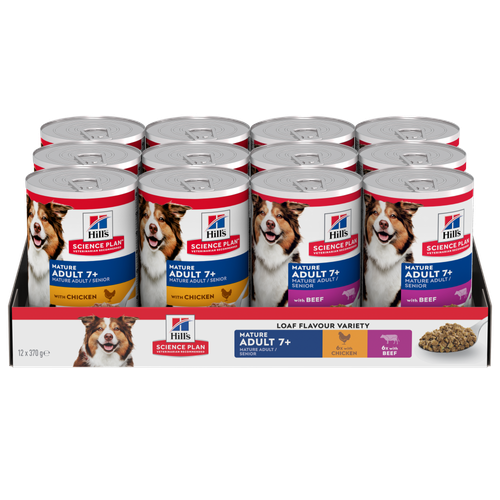 Mature Adult Dog Food
Mature Adult Dog FoodHill's Science Plan Mature Adult Multipack Wet Dog Food with Chicken & Beef are complete premium pet foods for mature adult dogs from 7 years. Your dog will love these deliciously smooth and savoury minced loaves, formulated to deliver the appropriate amount of energy to support the needs of adult dogs.
Shop NowFeatured products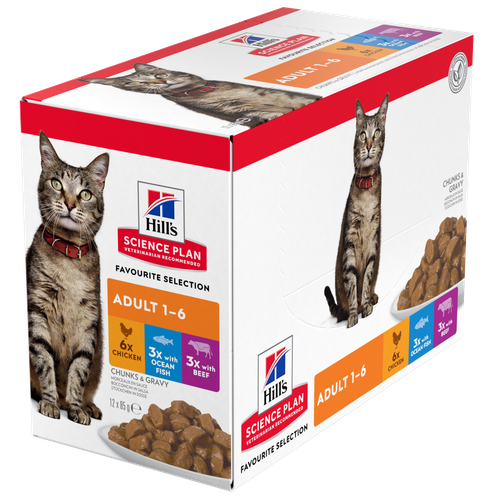 Adult Multipack Wet Cat Food with Beef, Ocean Fish & Chicken
Adult Multipack Wet Cat Food with Beef, Ocean Fish & ChickenTender chunks in gravy for cats, with high-quality protein to maintain lean muscle. With vitamin E and omega-3s & -6s for healthy skin and balanced minerals to support healthy vital organs.
Shop Now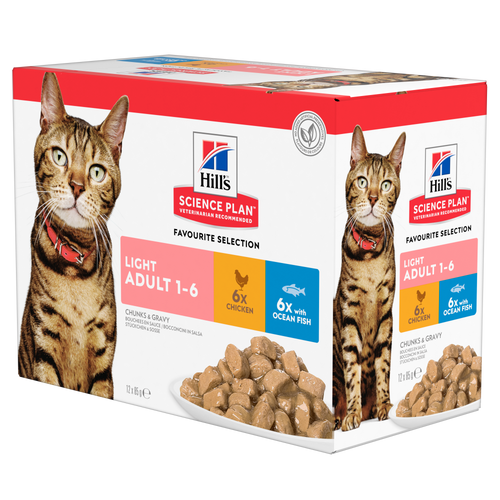 Light Adult Multipack Wet Cat Food with Chicken & Ocean Fish
Light Adult Multipack Wet Cat Food with Chicken & Ocean FishTender chicken chunks in gravy for cats, with L-carnitine and fewer calories for ideal weight management. Packed with high-quality protein, omega-6s, and vitamin E for shiny fur and healthy skin.
Shop Now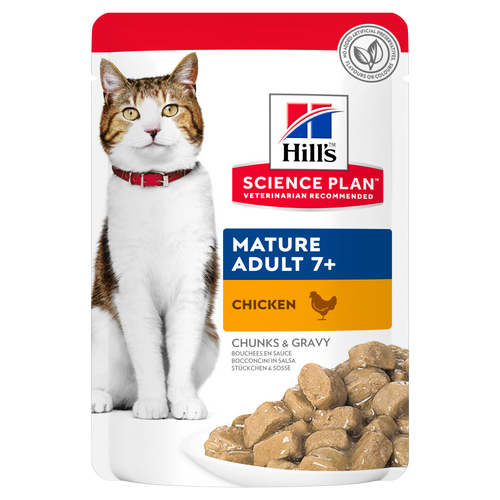 Mature Adult Wet Cat Food with Chicken
Mature Adult Wet Cat Food with Chicken
Tender chicken chunks in gravy for mature adult cats. Made with easy-to-digest ingredients, high-quality protein for lean muscle maintenance and antioxidant vitamins C+E for optimal health.
Shop Now -
Dog
- Dog Tips & Articles
-
Health Category
- Weight
- Food & Environmental Sensitivities
- Urinary
- Digestive
- Joint
- Kidney
-
Life Stage
- Puppy Nutrition
- Adult Nutrition
- Senior Nutrition
Cat- Cat Tips & Articles
-
Health Category
- Weight
- Skin & Food Sensitivities
- Urinary
- Digestive
- Kidney
-
Life Stage
- Kitten Nutrition
- Adult Nutrition
Featured articles The Incredible Science Behind Your Pet's Microbiome
The Incredible Science Behind Your Pet's MicrobiomeLearn what your pet's microbiome is, how it contributes to your pet's gut and overall health, and why nutrition is important in maintaining healthy microbiomes.
Read More Show some love with wet foods: a great choice for pets with health issues
Show some love with wet foods: a great choice for pets with health issuesShow some love with wet foods: a great choice for pets with health issues.
Read More The Right Diet For Your Pet
The Right Diet For Your PetIn people, the right diet is very important. If you are eating the wrong way for your metabolism, activity level, age and lifestyle you could end up with health issues.
Read More -


If you’ve ever seen your cat peeing blood, you know just how alarming it can be. While it isn't something one ever wishes to witness, blood in cat urine is actually quite common. Haematuria, the scientific name for blood in the urine, can be caused by problems in the urinary tract or even disease processes elsewhere in the body that can affect the urinary tract or kidneys.
Blood in cat urine: signs to look for
While haematuria may be as obvious as blood or blood clots in the urine, it may not always be so visible. Most instances of blood in cat urine are actually diagnosed at the microscopic level in what appears to be normal-coloured urine; in these cases, there's only a small amount of blood. Haematuria may also cause urine to turn pink or red.
According to Cats Protection, some of the other signs you may see along with a change in the urine's colour include:
- Increased drinking.
- Increased urination.
- Straining to urinate.
- Vocalising when in the litter tray.
- Going in and out of the litter tray repeatedly.
- Urinary accidents outside of the litter tray.
- Inability to urinate altogether (a medical emergency).
- Bruising on the skin in the form of obvious bruises or small dots.
- Bleeding from places such as the nose, gums, eyes, ears or rectum.
- Bloody vomit or faeces.

Causes of blood in urine
Urinary tract problems can affect the upper tract (the kidneys and ureters), the lower tract (the bladder and urethra) or, of course, both. All of these can cause blood in the urine. Most of the cases we see are in the lower part and we group these diseases together under the name Feline Lower Urinary Tract Disease (FLUTD).
Some causes of blood in the urine are much more common than others. The most common is something called Feline Idiopathic Cystitis (FIC). Lots of vets now refer to this more simply as ‘stress cystitis’ because it’s usually seen in cats that aren’t entirely relaxed in their home environment (we’ll talk more about that later).
Another common cause is crystals or stones in the bladder or kidneys. These are commonly related to FIC and sometimes due to other problems in the body such as kidney disease or, rarely in cats, urinary infections.
In order to treat your cat as effectively as possible, your vet will need to find out the exact cause of the blood in the urine or other signs your cat may have. This usually means getting a urine sample to check the pH, how concentrated the urine is, and whether there are crystals or any infection present. They might also want to take a blood sample to make sure there are no major problems such as kidney disease. They will also need to know exactly how your cat lives because cats kept indoors and cats that live with other cats are much more likely to have stress cystitis than single cats with access to the outside. They’ll also want to know what your cat normally eats, as food is an important option for treating these issues.


Tasty Tips
Treating FLUTD and blood in the urine
As with all things, the right treatment depends on the exact cause. Underlying diseases will need to be addressed but most cases of urinary disease benefit from a change in diet and special attention to water intake. Some foods are used to dissolve certain types of crystals and stones and stop them recurring. Some types of stones will need to be removed with an operation because they can’t be dissolved. In these cases, a cat will normally be given a food formulated to stop the stones coming back again. Foods for urinary issues have slightly altered mineral levels and omega oils from fish oil to help with inflammation, and some also have natural additives with a calming effect.
Water intake is very important for all cats with urinary issues. Cats evolved from desert-living relatives and tend to have naturally very concentrated urine. This makes crystals and stones more likely to form. Ensuring they drink plenty of water helps to flush the system and make recurrence less likely. Many cats only eat dry food, and this is fine, but wet food is an easy way to increase water intake if you haven’t tried it.
Whether you feed wet or dry food, it’s also important to have plenty of fresh water in multiple places round the house. This means your cat never has to go far to get a drink, and, if you have multiple cats, they don’t have to face conflict with another cat to get to water. Some cats also love to drink running water so cat fountains can really help.
When it comes to FIC and stress, your vet may ask you to try and make some changes in the house to help the food to work and make your cat feel more relaxed. Things to consider include:
- Making sure all your cats have access to food and water dishes that are not next to each other. The general rule is to have one water bowl for each cat plus an extra one. These should be in lots of different locations so even the most timid cat can eat and drink in peace.
- Offering litter trays if you don’t already. Again, ideally have one more than the number of cats you have. They should be in quiet, secluded locations and away from food and water.
- Offering access to the outside if at all possible so your cats can explore and choose where to go to the toilet.
- Making sure there are plenty of high hiding places for all your cats. Putting shelves or furniture in corridors can also give cats opportunities to avoid other cats they don’t like very much!
Ensuring your cat eats a well-balanced food that's complete and balanced for their life stage (not simply "all" life stages) is very important. Some foods may have high levels of minerals that may contribute to the development of crystals and stones, which may then contribute to lower urinary tract disease.
While cats with FLUTD are common, if you ever notice a cat peeing blood, never make assumptions. Always seek veterinary care first to rule out treatable diseases, and remember that the inability to urinate is a life-threatening medical emergency.


Dr. Laci Schaible is a small animal veterinarian, veterinary journalist, and a thought leader in the industry. She received her Doctor of Veterinary Medicine from Texas A&M University and her Masters in Legal Studies from Wake Forest University.
Related products
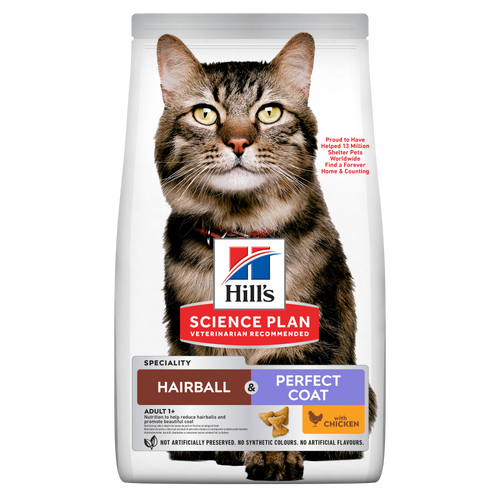
Hill's Science Plan Hairball & Perfect Coat Adult Cat Food with Chicken is formulated to effectively help avoid hairball formation in adult cats while promoting a beautiful coat. Thanks to its mix of essential omega-6 fatty acids, this food benefits the cat's skin and fur, keeping them healthy and shiny. Our Advanced Fibre Technology helps reduce hairballs by naturally promoting their passage through the gut. This food is formulated with high-quality protein for a perfectly balanced, great-tasting recipe.
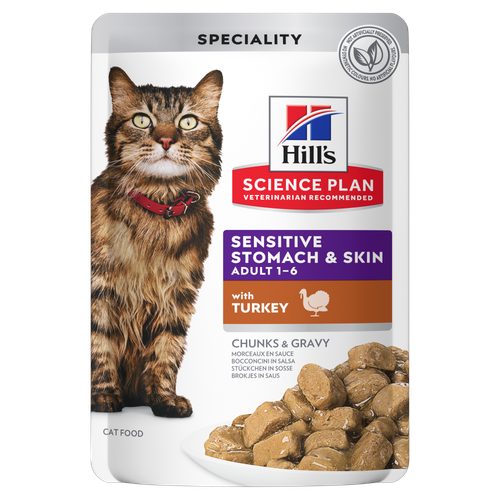
Hill's Science Plan Sensitive Stomach & Skin Adult Wet Cat Food with Turkey is a complete pet food for adult cats, aged 1–6 years. This highly digestible wet food comes in a pouch and supports healthy digestion, as well as nourishes skin and promotes a thick and lustrous coat.
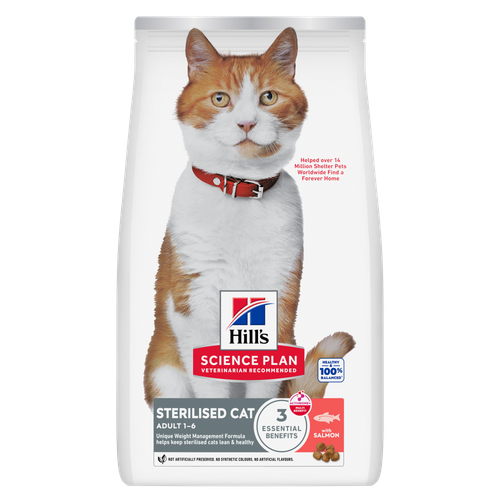
Hill's Science Plan Adult Sterilised Cat Dry Food with Salmon is specially formulated with ActivBiome+ Multi-Benefit Technology. It is a precisely balanced nutrition, tailored to meet the needs of sterilised cats, to help keep them lean & healthy.
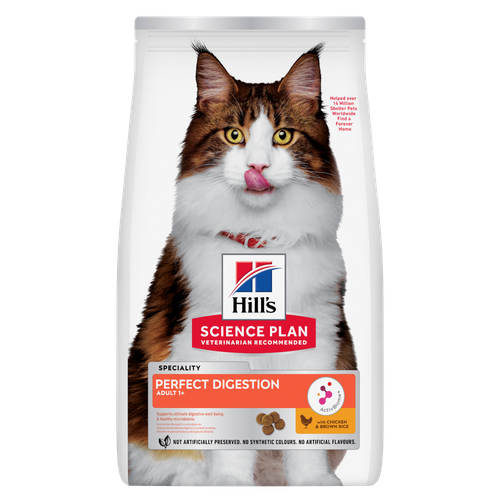
Hill's Science Plan Perfect Digestion Cat Food with Chicken & Brown Rice nourishes your cat's unique microbiome and helps them reach their full potential.
Related articles

From essential vitamins & minerals to different types of meat, learn what to look for when choosing the best cat food for your feline.

Chocolate is known to be poisonous for dogs, but it can also be toxic for cats. Learn why chocolate is bad for cats & what to do if she's eaten it.

There are three common ways to feed a cat. Each way has its advantages and disadvantages.

Learn how to make homemade cat treats that are healthy for your pet with this recipe from Hills Pet Nutrition.

Put your cat on a diet without them knowing
Our low calorie formula helps you control your cat's weight. It's packed with high-quality protein for building lean muscles, and made with purposeful ingredients for a flavourful, nutritious meal. Clinically proven antioxidants, Vitamin C+E, help promote a healthy immune system.
Put your cat on a diet without them knowing
Our low calorie formula helps you control your cat's weight. It's packed with high-quality protein for building lean muscles, and made with purposeful ingredients for a flavourful, nutritious meal. Clinically proven antioxidants, Vitamin C+E, help promote a healthy immune system.

